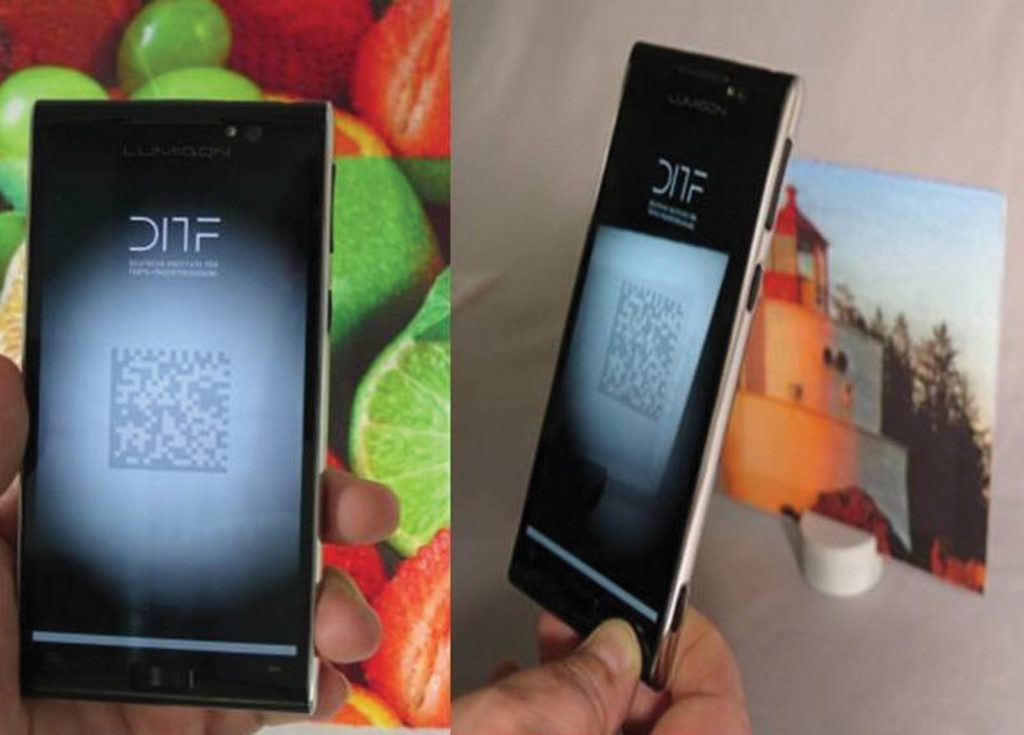by Marie O’Mahony

Established in 1921, the Deutsche Institut für Textil + Faserforschung (DITF) prides itself on “application-orientated research from molecules to products.” The German textile research institute occupies a unique global position in its focus on textiles, covering the entire value chain with activities that include R+D, testing, prototyping and a pilot factory. A highlight of the institute’s booth at IFAI Expo 2019 was their transparent security ink under the product name Transparency, which offered product security in digital textile printing, while remaining invisible to the eye.
Opportunity in textile security
The OECD’s report ‘Enquiries into Intellectual Property’s Economic Impact’ (2015) takes note that “the context in which IP operates has been changing substantially.” The report cites the rise of the Internet, Cloud computing, globalization and digitization as contributing factors. New research tools, technologies and business models are offering an opportunity for security provision to be a part of the innovation landscape. DITF’s transparent security ink offers one solution that is specifically aimed at the digital textile printing sector.
The value of the Global Digital Textile Printing Market is expected to reach $3.9 million by 2022, according to Allied Markets Research, with apparel seen to be one of the highest value sectors. Luxury fashion labels have already gravitated towards the technology with more recent advances coming from performance and athleisure. All of these are areas that are very protective of their IP and because of their product value, susceptible to counterfeit and copyright infringement. A technology that offers protection and a verification process that is also discrete has much to offer these industries and their consumers.
The Transparency technology works by digitally printing a security code, such as a QR or barcode, to the fabric using Infra Red (IR) particle ink for ink-jet printing. The correct viscosity needed for printing is achieved by using additives and absorbents to bring a sharp image quality. In addition, these additives allow the finished fabric to retain its soft handle so that the security tagging is not detectible by touch and the luxury aesthetic is not compromised.

The security code is only detectable by using a smartphone with the app installed and it is invisible on the fabric itself to the naked eye. To operate, the user holds the smartphone close to the printed code so that its integrated IR-sensitive camera converts the image to a 2D datamatrix security code that can then be seen by the user and authenticated as the genuine product. Digital patterns can be printed over the code without distorting the information transmittance.
Presenting the technology at Expo 2019, DITF’s Reinhold Schneider sees great potential for the technology with possibilities for supply chain verification to achieve a deeper level of bespoke security for digital textile printing. As with so many innovations, to achieve the full potential will likely involve partnerships that will bring their own vision to the development. With the market need clearly identified, the question now is where the first application will be.
Marie O’Mahony is an industry consultant, author and academic. She the author of several books on advanced and smart textiles published by Thames and Hudson and Visiting Professor at the Royal College of Art (RCA), London. www.linkedin.com/in/marie-o-mahony-94776836
 TEXTILES.ORG
TEXTILES.ORG


